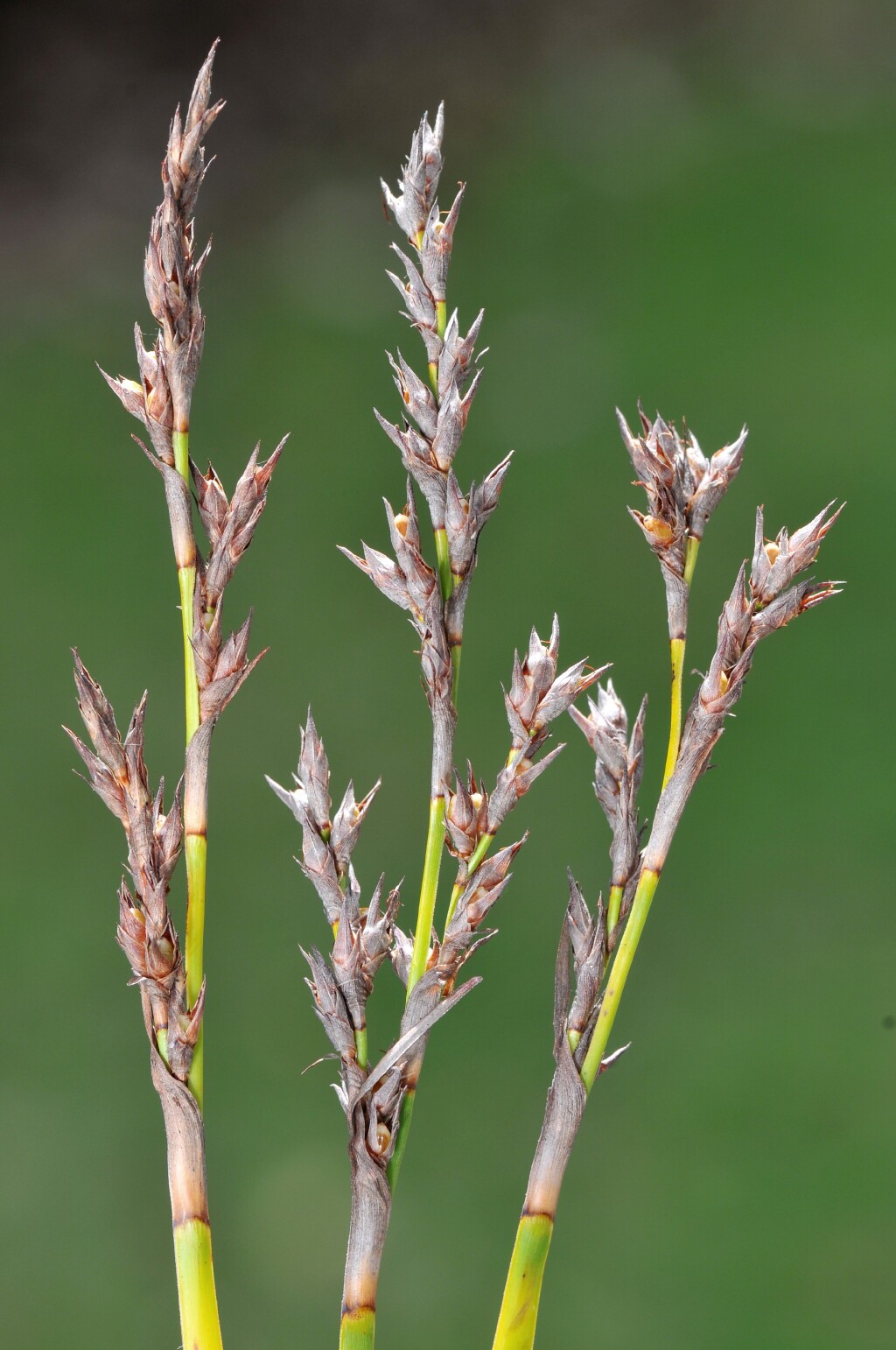Lepidosperma laterale
R.Br. Variable Sword-sedgeTufted perennial with very short rhizome. Culms rigid, erect, flat to slightly convex on one face or concavo-convex, glabrous, smooth or rarely scabrous, 30–100 cm high, 2–8 mm wide; margins scabrous or rarely smooth. Leaf-blades similar in form to culms but shorter, 3–8 mm wide; sheaths reddish or dark grey-brown at base, straw-coloured at apex, rarely all straw-coloured, not viscid, ± shining. Inflorescence ± linear in outline, erect to somewhat spreading, 4–35 cm long, 1–1.5 cm diam.; involucral bract shorter than inflorescence. Spikelets rather few, 4–8.5 mm long. Glumes 4–6, puberulous, red-brown to grey-brown, the 2–4 lowest empty, shorter than fertile glumes, acute, mucronate; fertile glumes 3.5–6.5 mm long, long-acute; hypogynous scales 6, pale brown, from one-quarter to one-third length of nut. Nut ovoid, pale brown, wrinkled to smooth, shining, 2.5–4 mm long, 1.3–2.0 mm diam. Flowers spring–summer.
LoM, MuM, Wim, GleP, Brid, VVP, VRiv, GipP, OtP, WaP, Gold, CVU, GGr, DunT, NIS, EGL, EGU, WPro, HSF, HNF, OtR, Strz, MonT, HFE, VAlp. Usually on sandy soils or amongst rocks, in a range of habitats, but commonly in heathy woodlands and open-forests.
Large plants with culms commonly 60 cm long or more and 6-8 mm wide, usually occurring in shaded, permanently damp sites have been referred to L. laterale var. majus. At the other end of the range of variation are small plants with narrow culms and leaves and slender inflorescences with rather distant spikelets. These have been referred to L. laterale var. angustum. As these two variants are linked by a near complete range of intermediates without any clear disjunction, no subspecific taxa are recognised. The relationships between this variable taxon and L. elatius, L. gunnii and L. curtisiae are not clear.
Wilson, K.L. (1994). Cyperaceae. In: Walsh, N.G.; Entwisle, T.J., Flora of Victoria Vol. 2, Ferns and Allied Plants, Conifers and Monocotyledons, pp. 238–356. Inkata Press, Melbourne.
 Spinning
Spinning


